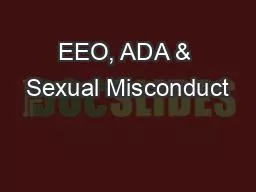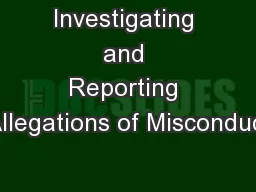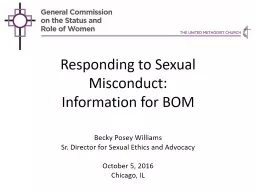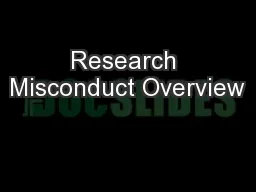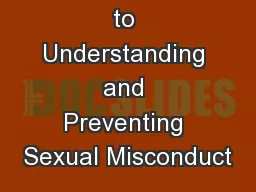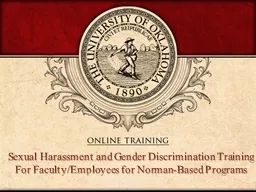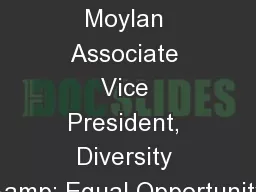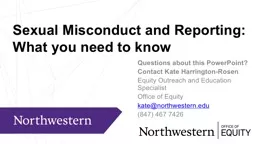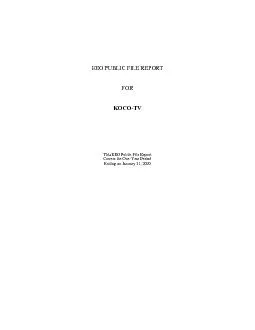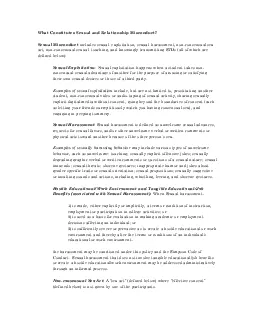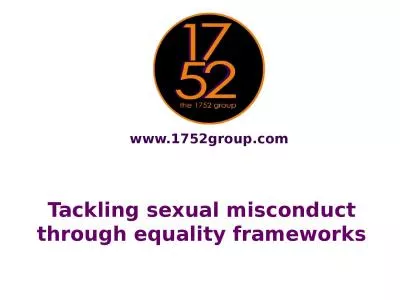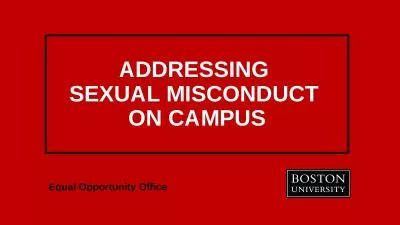PPT-EEO, ADA & Sexual Misconduct
Author : dollumbr | Published Date : 2020-10-22
Training for Supervisors Equity Compliance Office Alanna Dennis Esq Director Liza Almo Esq Title IX amp EEO Compliance Specialist Equity Compliance Who are we
Presentation Embed Code
Download Presentation
Download Presentation The PPT/PDF document "EEO, ADA & Sexual Misconduct" is the property of its rightful owner. Permission is granted to download and print the materials on this website for personal, non-commercial use only, and to display it on your personal computer provided you do not modify the materials and that you retain all copyright notices contained in the materials. By downloading content from our website, you accept the terms of this agreement.
EEO, ADA & Sexual Misconduct: Transcript
Download Rules Of Document
"EEO, ADA & Sexual Misconduct"The content belongs to its owner. You may download and print it for personal use, without modification, and keep all copyright notices. By downloading, you agree to these terms.
Related Documents

